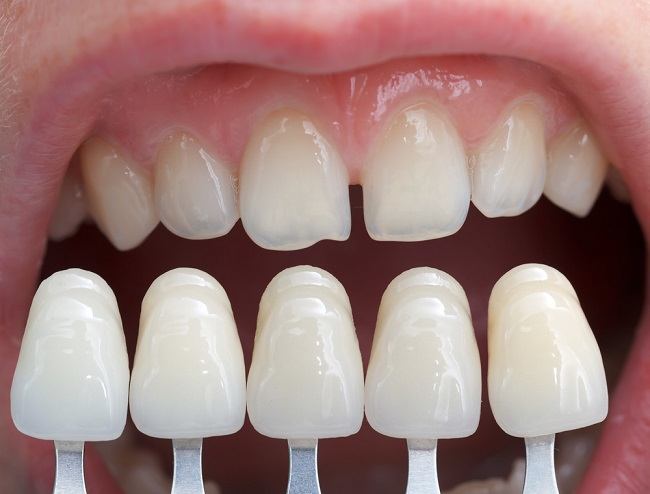Costello syndrome is a genetic disorder that can cause a range of symptoms, including developmental disorders, facial features, mental retardation, and heart problems. This condition occurs since the baby is still in the womb.
Costello syndrome is extremely rare and is estimated to occur in only 1 in 2.5 million people. This gene disorder can affect a number of systems in the body, including the brain, heart, muscles, skin, and spinal cord.

People with Costello syndrome are known to be at high risk for certain types of cancer, such as: rhabdomyosarcoma (cancer of the skeletal muscles) and neuroblastoma (cancer of the nervous system). Although there is no method to treat this condition, but proper treatment can help relieve the symptoms experienced.
Causes of Costello Syndrome
Costello syndrome is caused by mutations in the HRAS gene. Patients with Costello syndrome, both men and women, have a 50% risk of developing this condition with each pregnancy. However, Costello syndrome also often results from new mutations in the genes of the fetus from parents who do not have this condition.
The HRAS gene functions to produce H-Ras, a protein that helps control cell growth and division. HRAS mutations cause the H-Ras protein to be activated continuously so that cells continue to grow and divide. These conditions can trigger the growth of benign tumors or malignant tumors.
It is not known exactly how mutations in the HRAS gene cause Costello syndrome. However, experts suspect that this condition occurs due to uncontrolled cell growth and division.
Symptoms of Costello Syndrome
Costello syndrome can be detected before the baby is born through a pregnancy ultrasound. Symptoms that can be seen include:
- Excess amniotic fluid in the uterus which can cause hydrops fetalis and polyhydramnios
- Thickening in the fetal neck area
- The size of the long bones, such as the thighbone which is shorter than normal
- Abnormalities in the heart and kidneys
- Fast fetal heart rate
- Lymphatic dysplasia or abnormal cell growth around the spleen
Meanwhile, the symptoms of Costello syndrome that can be seen after birth include:
Head disorders, such as:
- Large head size (macrocephaly)
- Ear position lower than normal position
- Big and thick ear lobes
- Wide mouth
- Thick lips
- Big nostrils
- Crossed eyes (strabismus)
- Uncontrolled eye movement (nystagmus)
- Hair loss and sagging facial skin that causes sufferers to look like old people
Developmental disorders, in the form of:
- Difficult to increase weight and height
- Difficulty eating
- Mental retardation
- Early puberty
- Delays in walking or speaking
Musculoskeletal system disorders, including:
- Osteoporosis to fractures
- Tension of the Achilles tendon at the ankle
- Spine curvature (kyphosis) or curvature (scoliosis)
- Wrist bends towards the little finger
- Weak muscle contractions
- Joints are very flexible
Nervous system disorders, including:
- Accumulation of cerebrospinal fluid (hydrocephalus)
- Seizures
- Imbalance in walking
- Numbness or tingling in the hands and feet
Heart disorders, such as:
- Heart rhythm disturbances
- Chest pain
- Congenital heart disease
- Cardiomyopathy
Skin disorders, for example:
- Warts that generally grow around the mouth and nostrils in children aged 2 years or older. In some cases, warts grow near the anus.
- Thickened and blackened skin.
- Cutis laxa or skin conditions that are overstretched and look saggy. This condition can occur in the neck area, fingers, palms, and soles of the feet.
When to go to the doctor
Symptoms of Costello syndrome can be seen from birth. Babies born in the hospital will usually immediately get the necessary examination and treatment.
If your baby shows any of the signs mentioned above and you don't give birth in a hospital, take the baby to a hospital immediately, especially one with a NICU facility.
If you or a member of your family has Costello syndrome, it is advisable to seek genetic counseling, especially if you are pregnant or planning a pregnancy. Consulting a doctor can help you determine the risk of this condition passing to your offspring.
Costello Syndrome Diagnosis
Just like in other genetic disorders, the diagnosis of Costello syndrome is quite difficult to make. During pregnancy, this condition can be suspected from the physical characteristics obtained on ultrasound examination of pregnancy and blood tests. However, DNA testing for HRAS gene mutations should be performed to confirm the diagnosis.
Meanwhile, in the case of Costello syndrome after birth, the examination will begin with questions and answers regarding the patient's symptoms and medical history. The diagnosis of Costello syndrome can generally be obtained by looking at the patient's physical signs.
To confirm the presence of HRAS gene mutations, doctors also need to do a DNA test. This is done to differentiate Costello syndrome from other conditions with similar symptoms, such as Noonan syndrome.
If necessary, the doctor will also carry out supporting examinations, such as:
- MRI, to check the condition of the brain and spinal cord
- Abdominal ultrasound and pelvic ultrasound
- Electrocardiogram, to detect arrhythmias
- Urine test, to check the presence of blood in the urine
- Echocardiography, to detect abnormalities in the heart or heart valves
In pediatric patients, regular check-ups to the doctor are also necessary to detect abnormalities in the muscles and heart rhythm, as well as cancers in nerve cells, muscles, and bladder.
Costello Syndrome Treatment
Until now, there is no treatment method that can specifically treat Costello syndrome. Treatment is only limited to treating the symptoms experienced by the patient. Here are some of the treatment methods:
- Feed replacement infusion with a nasogastric tube (a tube inserted through the nose into the esophagus until it reaches the stomach), or with a gastronomic tube (a tube inserted through the stomach wall into the stomach), to provide nutrition for the baby
- Medicines and surgical procedures to treat heart problems
- Physiotherapy, occupational therapy, and physical therapy to treat developmental disorders
- Surgical procedure to lengthen the short Achilles tendon so the child can walk, run and play better
- Treatment to a dermatologist to remove warts and improve skin thickening
- Growth hormone therapy to treat growth disorders and control metabolism
Costello Syndrome Complications
Complications that need to be watched out for in Costello syndrome are complications from heart problems. If not treated properly, the heart problems in Costello syndrome can lead to heart failure or sudden cardiac arrest.
In addition, genetic disorders that are owned by people with Costello syndrome make them more at risk of developing malignant cancers, such as muscle tissue cancer (such as rhabdomyosarcoma), nerve cancer (neuroblastoma), and bladder cancer.
Costello Syndrome Prevention
Costello syndrome is a disease that is difficult to determine the cause. Therefore, there is no known way to prevent this condition from occurring.









